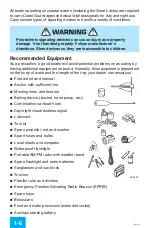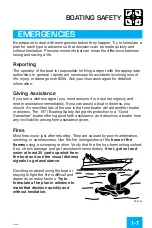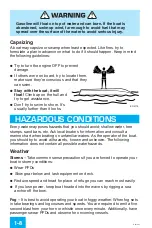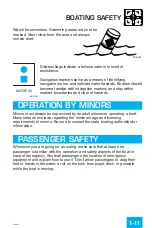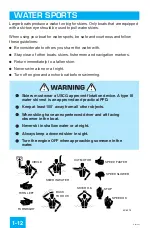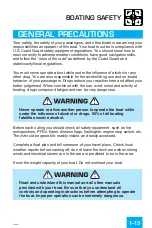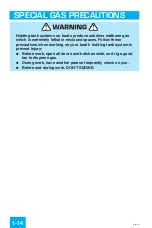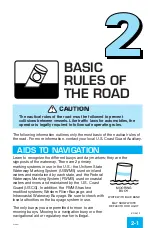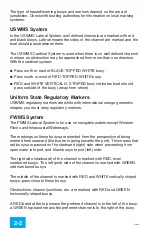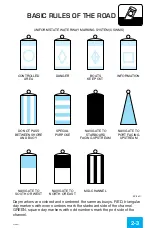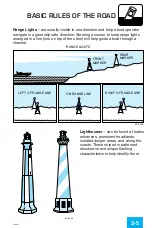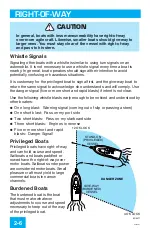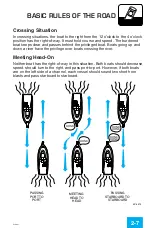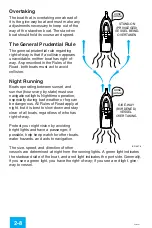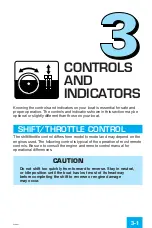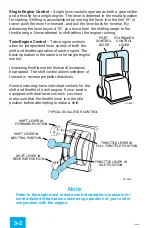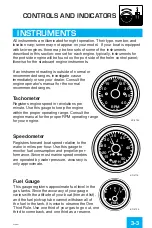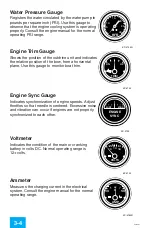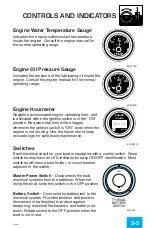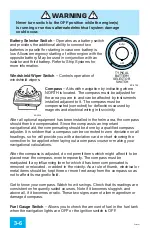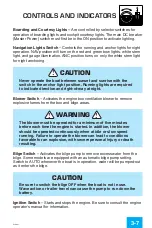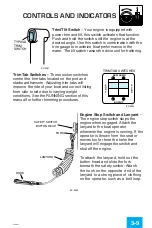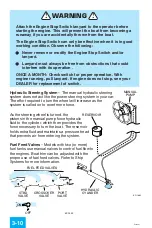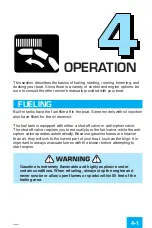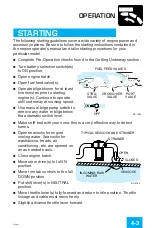
RIGHT-OF-WAY
In general, boats with less maneuverability have right-of-way
over more agile craft. Likewise, smaller boats should give-way to
larger ones. You must stay clear of the vessel with right-of-way
and pass to his stern.
Whistle Signals
Signaling other boats with a whistle is similar to using turn signals on an
automobile. It is not necessary to use a whistle signal every time a boat is
nearby. In general, boat operators should signal their intention to avoid
potentially confusing or hazardous situations.
It is customary for the privileged boat to signal first, and the give-way boat to
return the same signal to acknowledge she understands and will comply. Use
the danger signal (five or more short and rapid blasts) if intent is not clear.
Use the following whistle blasts early enough to be noticed and understood by
other boaters:
●
One long blast: Warning signal (coming out of slip or passing astern)
●
One short blast: Pass on my port side
●
Two short blasts: Pass on my starboard side
●
Three short blasts: Engines in reverse
●
Five or more short and rapid
blasts: Danger Signal!
Privileged Boats
Privileged boats have right-of-way
and can hold course and speed.
Sailboats and boats paddled or
rowed have the right-of-way over
motor boats. Sailboats under power
are considered motorboats. Small
pleasure craft must yield to large
commercial boats in narrow
channels.
Burdened Boats
The burdened boat is the boat
that must make whatever
adjustments to course and speed
necessary to keep out ot the way
of the privileged boat.
!
CAUTION
2-6
Cruiser
KC-0477
GIVE-WAY
(BURDENED)
VESSEL
DANGER ZONE
STAND-ON
(PRIVILEGED)
VESSEL
12 O'CLOCK
4 O'CLOCK
Cruiser Section 2 7/21/08 8:06 AM Page 2-6
Summary of Contents for Cruiser 256
Page 1: ...CRUISER BOATS OV VNER S MANUAL B O A T S ...
Page 48: ......
Page 76: ......
Page 80: ......

